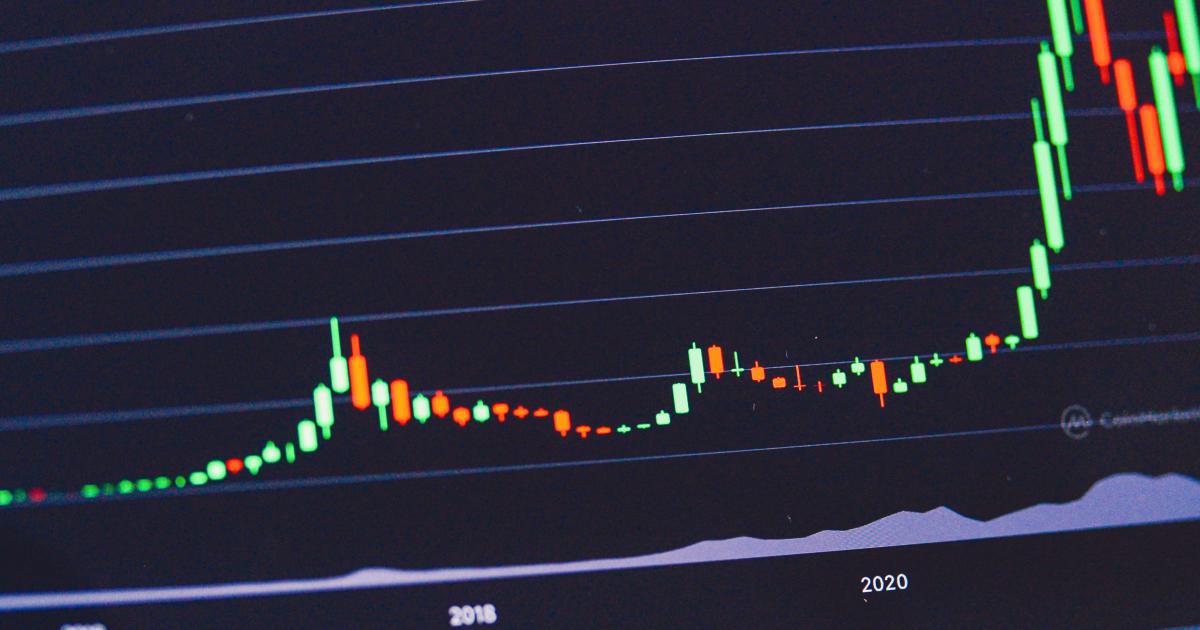Avoid Costly Mistakes in Crypto Arbitrage Today

Crypto arbitrage offers traders the opportunity to profit from price differences across exchanges, but the path to success can be riddled with pitfalls. In this article, we dive into the complexities of crypto arbitrage, unmasking the costly mistakes that can derail even the most experienced trader. By exploring real-world examples, identifying key risks, and outlining actionable strategies, we provide a comprehensive guide to navigating the volatile crypto space. Whether you are new to this trading strategy or refining your approach, understanding these fundamental principles can safeguard your investments and optimize returns.
Understanding Crypto Arbitrage
Crypto arbitrage is the practice of exploiting price differences for the same digital asset across different markets. In a rapidly evolving market with various exchanges, such differences can be significant yet fleeting. In essence, if Bitcoin is trading at a higher price on one platform compared to another, an arbitrage trader can buy at the lower price and sell at the higher price, securing a profit margin. However, the efficiency of such strategies depends on fast execution, robust technology, and a deep understanding of market mechanics.
What is Crypto Arbitrage?
At its core, crypto arbitrage is about recognizing and capitalizing on inefficiencies within the market. Traders constantly monitor various exchanges, using sophisticated algorithms and high-speed connectivity to detect price discrepancies. The fundamental idea is simple—buy low, sell high—but the execution is anything but straightforward.
The crypto market is decentralized and global, meaning that not all platforms are synchronized. Factors like geographical location, exchange fees, liquidity levels, and regulatory environments often lead to temporary price misalignments. While these misalignments present lucrative opportunities, they also come with risks that can overwhelm those who are unprepared.
Key points to consider include:
- Speed of Execution: Because market inefficiencies are usually short-lived, time is of the essence. Automated systems are often necessary to seize opportunities swiftly.
- Transaction Costs: Fees, slippage, and withdrawal delays can erode the theoretical profit. Smart traders meticulously assess these costs before executing trades.
- Market Volatility: The digital asset market is inherently volatile, and sudden price swings can lead to unexpected losses even if a trade seems promising.
Crypto arbitrage strategies come primarily in two forms:
Spatial Arbitrage: Buying and selling the same asset on different exchanges.
Triangular Arbitrage: Involving three different currencies and exchanges to exploit discrepancies across currency pairs.
The complexity further increases when comparing multiple exchanges with different regulatory frameworks and operational protocols. Additionally, blockchain transaction times can affect the efficiency of arbitrage, especially when transferring assets between platforms.
Understanding these foundational elements sets the stage for a deeper dive into the nuances of crypto arbitrage, enabling traders to recognize potential gains while mitigating associated risks.

Key Risks and Pitfalls in Crypto Arbitrage
Entering the realm of crypto arbitrage without thorough preparation can lead to costly mistakes. This section outlines the primary risks, discussing not only the theoretical aspects but also real-world challenges that traders may face.
Market Volatility and Timing Issues
Digital asset prices can fluctuate wildly within minutes or even seconds. While volatility creates arbitrage opportunities, it can also bring about significant risks. A trade that initially appears to offer a profit margin might quickly erode if the market moves against the trader's position. Timing issues, such as delayed order execution or network bottlenecks, exacerbate these problems, sometimes turning a profitable scenario into a loss-making one.
Factors influencing market volatility include:
- News and Events: Regulatory announcements, technological updates, or security breaches can trigger abrupt market movements.
- Liquidity Variations: Lower liquidity on certain exchanges means that large orders can drastically affect prices.
- Algorithmic Trading: High-frequency trading compounding these fluctuations can work both in favor of and against arbitrage strategies.
Traders must be agile, with an emphasis on maintaining robust risk management protocols to rein in potential losses. Automated trading systems are particularly advantageous because they execute orders within fractions of a second, reducing the chance of timing mishaps.
Transaction Costs and Hidden Fees
Every arbitrage transaction has an associated fee structure that might include trading fees, withdrawal fees, deposit fees, and network transaction costs. These seemingly small fees can add up, especially when the profit margins are tight. A common mistake is to overlook these transactional elements when calculating potential gains.
When planning your arbitrage strategy, consider the following:
- Exchange Fees: Different exchanges have varying fee structures. Always conduct a comparative analysis before executing trades.
- Network Congestion: Blockchain network congestion can raise transaction fees unexpectedly, particularly during peak periods.
- Slippage: The difference between the expected price of a trade and the price at which it is executed can diminish profits significantly, especially in volatile markets.
While the allure of crypto arbitrage lies in its simplicity—exploiting price differences—the devil is in the details. Diligently assessing all associated costs is critical to ensuring that the arbitrage remains profitable after fees and slippage.
Liquidity Constraints and Execution Risks
Liquidity is a major factor in ensuring profitable arbitrage trading. Adequate liquidity means that the market can absorb sizable trades without drastically affecting asset prices. However, several exchanges, particularly newer or less popular ones, might experience liquidity issues. This can lead to delays in filling orders or substantial price slippage — both of which can transform an excellent arbitrage opportunity into a loss.
Execution risks arise when orders are not completed as anticipated. For instance:
- Partial Fills: A trade might be partially executed at one price and the remainder at a less favorable price.
- Order Book Depth: A shallow order book can lead to rapid changes in available prices once large orders are placed.
- Platform Downtime: Technical failures or scheduled maintenance on exchanges can disrupt trading, particularly during periods of high market activity.
Implementing strategies to mitigate these risks includes choosing highly liquid markets, setting up reliable trading APIs, and having backup plans in case primary execution channels fail.
Regulatory and Security Concerns
The unregulated nature of many cryptocurrency exchanges exposes arbitrage traders to heightened security risks and sudden regulatory changes. The global landscape of crypto regulation is continuously evolving, and shifts in legal frameworks can lead to exchange shutdowns, asset freezes, or even confiscations.
Key regulatory and security challenges include:
- KYC/AML Requirements: Different jurisdictions impose diverse requirements that can delay transactions.
- Exchange Vulnerabilities: Cybersecurity remains a pressing issue. Hacks, phishing scams, and fraudulent activities are prevalent risks.
- Legal Ambiguity: The legality of crypto arbitrage can vary significantly from one region to another. Staying informed about local regulations is paramount.
These challenges demand that traders adopt rigorous security measures, such as using hardware wallets for long-term storage, enabling two-factor authentication, and ensuring compliance with local laws.
Human Error and Over-Reliance on Automation
Even the most robust trading systems can fall prey to human error. Misconfigurations, incorrect calculations, or a lack of understanding of market conditions can lead to devastating losses. Additionally, an over-reliance on automated systems without regular oversight might cause missed opportunities or cascading errors that could arise during system glitches or network failures.
To counter these issues:
- Regular Audits: Periodically review automated trading strategies and systems for anomalies.
- Simulation Testing: Before deploying a strategy live, test it using historical data or simulation environments.
- Informed Decision-Making: Combine algorithmic insights with human intuition and market research to form well-rounded trading strategies.
These measures help ensure that technology serves as an aid rather than a crutch, reducing the potential for costly mistakes.

Common Mistakes in Crypto Arbitrage
Missteps in crypto arbitrage are often the result of a combination of overconfidence, insufficient research, and technological shortcomings. In this section, we detail several common mistakes that traders should avoid to safeguard their capital and enhance their success rate.
Inadequate Market Research and Due Diligence
One of the most glaring mistakes made by traders is bypassing thorough market research. New traders, in particular, may be swayed by the promise of high returns without understanding the underlying market dynamics and specific conditions of different exchanges.
Several points to consider include:
- Exchange Reputation: Not all exchanges are created equal. Research the history, reputation, and security practices of each platform.
- Trading Volume: High trading volumes generally indicate better liquidity and lower price volatility, ensuring smoother execution of trades.
- Fee Structures and Withdrawal Limits: Each platform has unique fee mechanisms and withdrawal policies that can impact the success of your arbitrage operations.
Failure to conduct proper due diligence can lead to engaging with fraudulent or inefficient exchanges, resulting in poor trade execution, unexpected fees, or even fund losses.
Overestimating Speed and Underestimating Network Delays
Speed is critical in crypto arbitrage, but overestimating the swiftness of order execution is a common pitfall. Delays arising from network congestion, API lag, or system downtime can cause traders to miss crucial windows of opportunity. High-frequency trading algorithms may promise rapid responses, but even the slightest lag can turn a profitable arbitrage window into a negative trade.
Traders should keep in mind that:
- Infrastructure is Key: Invest in reliable, low-latency connections and robust computing resources.
- Geographic Considerations: Server locations relative to exchange headquarters can impact latency.
- Stress Testing: Regularly test your system under high-load conditions to identify and resolve potential bottlenecks.
By carefully calibrating expectations and continually improving technological infrastructure, traders can minimize the gap between anticipated and actual execution speeds.
Neglecting the Impact of Fees and Hidden Costs
As detailed earlier, transaction costs play a pivotal role in determining the end profitability of any arbitrage trade. A frequent error involves focusing solely on price differentials while neglecting to calculate the cumulative effect of fees incurred during buying, selling, and transferring assets. Even a seemingly marginal fee can tip the balance from a profitable transaction to a loss.
Key recommendations to avoid this pitfall include:
- Detailed Cost Analysis: Before initiating trades, run a full analysis of all expected fees, including exchange fees, network fees, and any possible slippage.
- Dynamic Pricing Models: Incorporate variable fee structures into your trading models to adjust in real-time as market conditions shift.
- Withdrawals and Deposits: Consider the time and costs associated with transferring assets across different platforms, ensuring that the profit margin remains viable.
A vigilant approach to cost management can transform a risky venture into a more controlled and profitable operation.
Poor Risk Management and Leverage Misuse
Risk management is the cornerstone of any successful trading strategy, yet many traders fail to implement a robust risk management plan. Relying too heavily on leverage amplifies both gains and losses, and overexposure can quickly turn a favorable arbitrage opportunity into a devastating setback.
Effective risk management strategies should include:
- Setting Stop-Loss Orders: To limit potential losses, always define clear exit points for trades.
- Diversification: Spread exposure across different platforms and asset classes to minimize the impact of any single failure.
- Position Sizing: Avoid over-leveraging; allocate funds in proportions that reflect not only potential returns but also the inherent risks.
Implementing such measures can significantly reduce the impact of unexpected market shifts and technical glitches, preserving capital during volatile periods.
Dependency on Unverified Tools and Strategies
The allure of crypto arbitrage has drawn marketers and developers to create various tools promising to simplify the process. However, relying on untested or unverified systems can lead to unexpected failures. Automated bots and algorithms require constant oversight and adjustments to remain effective.
Traders should take these precautionary steps:
- Tool Verification: Validate the credentials and historical performance of any trading tool before relying on it.
- Continuous Monitoring: Regularly assess the performance of algorithms and remain engaged in manual oversight.
- Community and Expert Input: Leverage community knowledge and expert recommendations to fine-tune trading models and identify potential vulnerabilities.
These practices help reduce over-dependence on third-party solutions while ensuring that your strategy remains adaptable and resilient.
Best Practices and Actionable Strategies for Success
Mastering crypto arbitrage is a journey of continuous learning and adaptation. Building on the understanding of common risks and mistakes, the following best practices serve as actionable strategies that traders can implement immediately to avoid costly errors in their arbitrage ventures.
Invest in Robust Technology and Infrastructure
A solid technical foundation is indispensable for efficient crypto arbitrage. Investing in reliable hardware, stable internet connections, and advanced trading platforms can significantly improve trade execution speed and reduce errors.
Actionable recommendations include:
- API Integration: Use APIs provided by reputable exchanges to ensure fast and direct access to market data and order execution.
- Low-Latency Servers: Opt for servers that are geographically close to major exchanges to minimize latency.
- System Redundancy: Set up backup systems that can take over in case of primary system failures, ensuring continuity during high market volatility.
By bolstering your technological setup, you can reduce the technical risks associated with delays and system downtimes.
Develop a Detailed Trading Plan
A comprehensive trading plan that includes defined entry and exit strategies is crucial for successful arbitrage. This plan should account for potential market fluctuations, fee structures, and risk management protocols.
Steps to create an effective trading plan:
- Market Analysis: Conduct thorough market research to identify the best exchanges and currency pairs for arbitrage.
- Risk Assessment: Set clear risk parameters such as maximum acceptable drawdowns and stop-loss levels.
- Regular Updates: Review and update the trading plan regularly to account for new market trends and regulatory changes.
An evolving trading plan that responds to market dynamics not only safeguards your capital but also positions you to seize emerging opportunities.
Emphasize Continuous Education and Market Research
In the fast-paced world of crypto arbitrage, staying informed is as critical as having state-of-the-art technology. Continuous education, attending industry workshops, and keeping pace with market news are crucial components in staying a step ahead of potential pitfalls.
Practical steps for continuous learning include:
- Webinars and Workshops: Participate in industry-specific webinars and live trading sessions.
- Professional Networks: Build a network of experienced traders and industry experts for mutually beneficial insights.
- Publications and Research Reports: Subscribe to research reports and credible financial publications that provide in-depth market analyses.
Constant engagement with the trading community and ongoing education helps refine strategies and adapts your approach with evolving market conditions.
Utilize Advanced Analytics and Machine Learning
Data-driven decision-making enhances the precision of arbitrage opportunities. Leveraging advanced analytics and machine learning tools can help predict market movements and pinpoint price discrepancies before they vanish.
Key steps include:
- Historical Data Analysis: Use historical trading data to model potential future outcomes and refine your arbitrage algorithms.
- Real-Time Monitoring: Implement systems that provide real-time market analytics, creating a dynamic environment for adjusting strategies.
- Pattern Recognition: Utilize machine learning algorithms to detect patterns or anomalies that may signal advantageous arbitrage opportunities.
Advanced analytical frameworks not only streamline decision-making but also elevate the overall effectiveness of your trading strategy in real-time.
Establish a Secure and Compliant Trading Environment
Security in crypto arbitrage is non-negotiable. Ensuring that trading activities are secure and compliant with regulatory standards builds resilience against unforeseen challenges and legal pitfalls.
Actionable security measures include:
- Multi-Factor Authentication: Secure all trading accounts with strong, multi-layered authentication processes.
- Cold Storage: Store large amounts of digital assets in offline wallets to minimize the risk of theft.
- Regulatory Compliance: Keep informed about relevant legal changes and ensure your trading practices remain in compliance with global and regional regulations.
A secure trading environment protects investments and fosters confidence in executing high-speed arbitrage strategies.

Real-World Examples and Case Studies
Illustrating the principles of crypto arbitrage through real-world examples helps demystify the strategy and underscores the importance of rigorous planning and risk mitigation.
Case Study 1: Navigating Unexpected Fees
Consider the instance of an arbitrage trader who identified a lucrative price difference between a major exchange and a smaller platform. Relying solely on the apparent price difference, the trader embarked on the trade without a comprehensive fee analysis. Despite the promising price spread, unexpected withdrawal fees and a hidden network fee reduced the overall profit margin drastically, turning an anticipated win into a negligible gain. This case emphasizes the need for a detailed, all-inclusive cost assessment before executing any trade.
Case Study 2: Overcoming Platform Downtime
In another scenario, a trader utilizing high-frequency trading algorithms encountered a sudden downtime on one exchange during peak trading hours. The disruption led to partial execution of orders and resulted in unfavorable price movements during the trade closure. By having contingency plans and backup platforms, the trader was eventually able to recoup losses, but the incident underscored the critical need for redundancy and constant system monitoring.
Lessons Learned from the Field
Several recurring themes become evident from these case studies:
- Comprehensive research and planning are paramount.
- Relying on a single platform or tool can expose traders to unforeseen risks.
- Incorporating redundancy and backup strategies can help recover from unexpected market disruptions.
These real-world examples highlight that even experienced traders can miss vital details that severely impact the success of crypto arbitrage. Constant vigilance, a proactive approach to risk management, and leveraging multiple sources of market intelligence are indispensable for sustaining profitability.
Future Trends and Conclusion
Looking ahead, the landscape of crypto arbitrage is set to evolve with advancing technology and increasing regulatory scrutiny. Automation, machine learning, and improved market infrastructure will likely create more efficient trading conditions. However, with these advancements come new challenges that require adaptive risk management strategies.
The Impact of Technological Advancements
Emergent technologies are transforming how traders approach crypto arbitrage:
- Enhanced Connectivity: The continuous improvement in network speed and reliability will reduce execution delays, allowing traders to capitalize more reliably on price discrepancies.
- AI and Predictive Analytics: The integration of artificial intelligence can provide deeper insights, identifying arbitrage opportunities that are beyond human detection.
- Decentralized Finance (DeFi): As DeFi platforms mature, arbitrage opportunities may extend to areas traditionally dominated by centralized exchanges, opening new avenues for profit but also introducing additional complexities.
Regulatory Shifts and Global Market Coordination
Regulations will likely play a significant role in shaping the future of crypto arbitrage:
- Cross-Border Transactions: Greater collaboration among international regulators could lead to more standardized practices, reducing the potential for regulatory arbitrage.
- Investor Protection: Strengthened safeguards might reduce market volatility by minimizing unscrupulous practices, though they could also limit some agile arbitrage strategies.
- Enhanced Transparency: Modern blockchain technologies already offer unparalleled transaction transparency. Future legal frameworks may further leverage these features to promote honest market practices.
Final Thoughts: Strategies to Mitigate Future Risks
Crypto arbitrage remains a compelling yet complex strategy. To succeed in this competitive field:
- Adaptability is Crucial: Always be prepared to modify strategies in response to regulatory and market shifts.
- Integrate Learning and Automation: Combine human expertise with sophisticated analytical tools to stay ahead of trends.
- Guard Against Overconfidence: Even with advanced technology, never underestimate the unpredictable nature of markets; always implement robust risk management.
In conclusion, avoiding costly mistakes in crypto arbitrage is a multifaceted challenge that demands a blend of advanced technology, rigorous market research, and strategic planning. By deepening your understanding, implementing effective risk management strategies, and staying informed about market and regulatory trends, you can navigate the complex world of crypto arbitrage with greater confidence and success. While there is no foolproof formula, continuous adaptation and learning remain the trader’s best allies in this dynamic arena.
The world of crypto arbitrage is evolving rapidly, and the next breakthrough may well come from embracing technology while retaining disciplined strategies. Leverage the insights shared in this guide to refine your approach, minimize pitfalls, and create a sustainable, profitable journey in crypto arbitrage.
Unmatched Trading Power with Binance
Are you ready to take your trading game to new heights? Binance offers a cutting-edge platform for seamless cryptocurrency transactions.
With lightning-fast execution, top-tier security, and a vast selection of coins, you'll have all the tools you need to maximize your profits. Join now and experience the future of trading.
Ludovik Beauchamp
49 posts written




